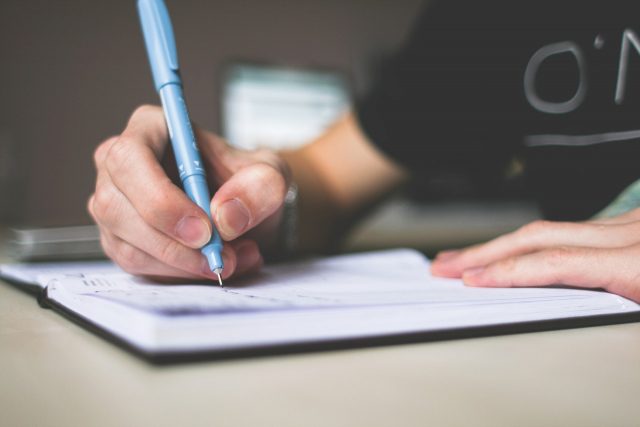It is never a good situation to be in when someone may have to wonder whether or not a family member is addicted to alcohol or drugs. However, if you do find yourself in this situation, just know that you are not alone, as nearly 21 million Americans struggle with an active addiction in our world every day, but more importantly, know that it is never your fault. When someone in your family abuses drugs or alcohol, it not only affects them but everyone around them as well. Their addiction can cause financial, emotional, physical, psychological, and environmental effects on the people who care about them the most. If someone in your family was suffering from an illness, such as diabetes or heart disease, most wouldn't hesitate on finding them help, the same goes for an addicted loved one.
Addiction is a brain disease characterized by the person's lack of self-control overusing drugs or alcohol, even though they most likely have experienced some severe and negative consequences, like losing their job or ending up homeless. It is a mental illness that often times requires addiction treatment from a mental health professional. The repeated use of drugs and alcohol alters the way their brain operates, so even though a loved one may express the desire to never use drugs or alcohol again, most of the time they are completely unable to make the decision to stop on their own. There is hope for recovery, though, here are a few steps you can take if a family member is showing signs of having substance abuse problems.

One of the first steps to take when you believe a family member is suffering from an addiction is to educate yourself on the topic. As mentioned above, addiction is a disease. The more we understand on the subject, and exactly what your family member is suffering from, the easier we can accept what comes along with it. It is not necessarily their fault that they are unable to stop using drugs or alcohol, they need help and the tools for recovery.
It is often said that addiction is a family disease because it affects not only the person suffering but everyone around them. Having a relationship with an addict can be very overwhelming and stressful. Reach out to support groups like Al-Anon/Ala-teen/Nar Anon (12 step support groups for family members and friends of people who have an addiction to drugs or alcohol).
It can be difficult to hide one’s resentment or anger from years of disappointment and hurt because of the addicted person's actions but it is important to remember that your family member is sick. When it comes to someone being in an active addiction, they are not themselves, they are under the influence of very powerful mood-altering drugs. Addicts do not respond well to confrontation, approaching them with loving-kindness will help them listen to what you have to say, instead of wanting to run the other direction.
Sit down with your family member face to face and let them know you are concerned that they are suffering from a substance use disorder. Remember to remain compassionate but expect difficulties, such as;
Have information ready and available, such as inpatient and outpatient programs if they do agree to get help. If they refuse treatment ask if they will consider going to a support group for addicts, like Alcoholics Anonymous (AA) or Narcotics Anonymous (NA). If they refuse and act with anger or hostility, just reassure them that you are concerned about their wellbeing and that you will be taking further action to get them the help they need.

Staging an intervention is one of the most effective ways of getting an addicted person help. An intervention is when friends and family members of an addict join forces together, with the help of a professional interventionist, in a carefully planned process to get someone to seek professional help for an addiction. An intervention typically includes these steps;
Get help from a professional and form a planning group of family members and friends, try to have a good mix of people.
Find out the extent of the loved ones' problem and research treatment programs and options for their specific problem.
Meet with the intervention team and decide on consequences (such as no more money or rides, they have to find a different place to live, no more contact, they can't see their children, etc.) if they decide not to get treatment. Make notes on specific times their addiction has caused issues in your life so that they can’t deny they have a problem.
Without telling the loved one why, have them meet the intervention team at the location and take turns expressing concern for the loved ones and specific times they have been hurt by the addict's actions. Each person goes over specific changes they will make and consequences if the person refuses treatment.
If the person still chooses to not enter treatment, follow up with specific changes and consequences. If the addict's way of life is taken away from them, they are more likely to get the help they need.
We hope that your loved one decides to get the help that they need, but setting healthy boundaries for yourself will only ensure that you are not enabling the addict to continue their behavior and that you are leading a healthy and fulfilling life.
Marijuana, also known by cannabis, weed, grass, shake, ganja, reefer, dope, hash, herb, chronic, and many other names, has a reputation for being a safe narcotic.
In reality, there are no 'safe' narcotics, and the potential for addiction to 'weed' (as it will be henceforth referred to) has well earned its place on the DEA Schedule 1 list of dangerous, addictive drugs. Let's read on to see just how weed can be addictive and habit forming.
"Don't Panic, It's Organic" one popular cannabis-related slogan reads. The 'Good Time' reputation weed has, due in part to its role in the burgeoning hippie movements of the 60s and early 70s, has led many substance abusers and addicts astray.
Popular TV shows and movies such as "That 70's Show" and "Harold and Kumar Go To White Castle" portray weed abuse as being, at worst, mildly intoxicating. Unfortunately, even casual marijuana consumption can permanently alter your brain chemistry.
The team found that persistent marijuana use was linked to a decline in IQ, even after the researchers controlled for educational differences. The most persistent users — those who reported using the drug in three or more waves of the study — experienced a drop in neuropsychological functioning equivalent to about six IQ points (PNAS, 2012). "That's in the same realm as what you'd see with lead exposure," says Weiss. "It's not a trifle."
https://www.apa.org/monitor/2015/11/marijuana-brain
Not a good time. Not a laughing matter. Yet, the most chronic 'chronic' users will deny addiction, even as they go for their bedside' wake and bake' (referring to getting high first thing in the morning after waking up).
In a sense, weed is not addictive in the same way that heroin is. Your body does not develop a physiological need for it. However, the active ingredient in weed, Δ9‐tetrahydrocannabinol (THC), quickly invokes a resistance in the human body. More and more weed or weed products are needed to stay high.
What are some of the positive aspects of weed that encourage people to avoid withdrawal (and therefore, spur addiction?)
THC interacts with the reward system of your brain and dumps dopamine, much like harder drugs such as methamphetamine, cocaine, and others. This leads to a sense or feeling of euphoria and stress relief.
Weed allegedly can treat certain types of pain - a self-medicator dependent on weed may not want to get clean due to an injury or pain.
Weed can also interfere with the formation of memories, and the cessation of it may force an individual to deal with a trauma or other event that weed helped them to forget.
Other symptoms of withdrawal include diminished appetite, stomach or digestion issues, depression, chills, inability to focus on a task, sweating, headaches, rapid mood changes, irritability, insomnia or other sleeping disorders.
Many users will also experience intense cravings for marijuana, similar to the way a smoker craves a cigarette.
Marijuana use disorder becomes addiction when the person cannot stop using the drug even though it interferes with many aspects of his or her life. Estimates of the number of people addicted to marijuana are controversial, in part because epidemiological studies of substance use often use dependence as a proxy for addiction even though it is possible to be dependent without being addicted. Those studies suggest that 9 percent of people who use marijuana will become dependent on it,24,25 rising to about 17 percent in those who start using in their teens.26,27
https://www.drugabuse.gov/publications/research-reports/marijuana/marijuana-addictive
To summarize this excerpt, the 'use disorder' of weed becomes an addiction when you cannot force yourself to stop using it, despite having one or more compelling reasons in your life to do so.
According to DrugAbuse.gov, only 10% of people will become addicted, a much lower rate than heroin or methamphetamines. If that's the case, then why is it so important to reach out to and try to help marijuana addicts?
Paralleling the rise in marijuana use disorders, treatment admissions for primary marijuana dependence have increased both in absolute numbers and as a percentage of total admissions, from 7 percent in 1993 to 16 percent in 2003 (SAMHSA, 2004). The extent of marijuana use and its associated consequences clearly indicate a public health problem that requires systematic effort focused on prevention and intervention.
https://www.ncbi.nlm.nih.gov/pmc/articles/PMC2797098/
Even with a rise in the prevalence of treatment facilities and staff trained to handle marijuana addiction, it is the forgotten addiction. Individuals are far less likely to admit an addiction to marijuana than they would to say, heroin or amphetamines.
This is once again linked to popular depictions of marijuana in media and society as being a harmless narcotic, as opposed to the dangerous substance it is.
As an additional word of warning, the rise of THC oil products, such as "dabs," "wax," "shatter," and "budder," make it very easy to deliver massive doses of THC to addicts. THC concentrates in such products usually begins around 70%, or seven times stronger than a regular marijuana joint.
This super-dose of THC means that from the very first hit, the subject is already well on their way to developing an unfortunate resistance to THC.
Other products containing THC that addicts may utilize are soap, lotions, toothpaste, personal lubricants, candy, shampoo, and many others.
There is also a rise of THC being included in food items, such as brownies, cookies, and other foodstuffs.
Consult with a doctor or addiction expert before starting a recovery journey from marijuana. Like all narcotics, it can be an arduous process, but the payoff is absolutely worth it.
Yes, someone can be addicted to weed. While marijuana is often perceived as less addictive compared to other substances, it can still lead to dependence, especially with heavy or prolonged use. Individuals may experience withdrawal symptoms and find it challenging to quit despite negative consequences.
Marijuana addiction can impact daily functioning and overall health by affecting cognitive abilities, emotional regulation, and motivation. It may lead to difficulties in maintaining responsibilities at work, school, and in personal relationships. Additionally, long-term use can have health consequences, including respiratory issues and potential mental health effects.
Treatment options for individuals struggling with marijuana addiction typically include therapy, counseling, support groups, and in some cases, medication. Cognitive-behavioral therapy (CBT) and motivational enhancement therapy (MET) are commonly used approaches to address addiction-related behaviors and motivations. Support groups like MarijuanaAnonymous can also provide peer support and accountability. Additionally, medications maybe prescribed to manage withdrawal symptoms or co-occurring mental health conditions.
Several risk factors can increase the likelihood of developing a dependency on weed.Genetics play a role, as a family history of substance use disorders or addiction can predispose individuals to marijuana dependency. Early initiation of marijuana use, especially during adolescence, is associated with a higher risk of dependence.Environmental factors such as exposure to peer pressure, easy access to marijuana, and social norms supportive of drug use can also contribute to dependency. Additionally, individuals with co-occurring mental health disorders like depression, anxiety, or trauma may be more susceptible to marijuana dependency as a form of self-medication.Chronic stress or trauma can further increase the likelihood of using marijuana as acoping mechanism, potentially leading to dependency over time.
Addicts may disappear for various reasons, often related to their struggle with substance abuse and the accompanying challenges. One common factor is relapse, where individuals return to drug use and retreat from their usual surroundings, sometimes feeling overwhelmed by shame or guilt. This desire to avoid confrontation or pressure to seek treatment can drive them to isolate themselves, compounding feelings of isolation and hopelessness.
Additionally, addicts may disappear to seek out drugs or engage in drug-related activities without interference, reflecting a prioritization of substance use over other aspects of their lives. Co-occurring mental health issues, such as depression or anxiety, can exacerbate these tendencies, leading individuals to withdraw further from social support systems. In some cases, addicts may also vanish to evade legal repercussions or escape unsafe environments associated with their addiction. These reasons underscore the complex interplay between addiction, mental health, and external pressures that can contribute to an individual's disappearance.
If a loved one battling addiction goes missing, it's crucial to act swiftly and effectively. Begin by contacting local hospitals, jails, and homeless shelters to inquire about their whereabouts.Reach out to mutual friends or acquaintances who may have information, and consider filing a missing person report with law enforcement. Utilize social media and community networks to spread the word and solicit assistance in locating your loved one. Additionally, consider seeking support from addiction treatment centers or support groups for guidance and resources in your search efforts. Time is of the essence, so take proactive steps to locate your missing loved one and ensure their safety.
When a loved one who is struggling with addiction goes missing, there are significant risks and dangers to consider. They may be at heightened risk of experiencing harm or injury, particularly if they are engaging in high-risk behaviors associated with substance abuse.Without access to necessary medication or treatment, they may face health complications or exacerbation of existing medical conditions. Additionally, individuals who are missing and battling addiction may be vulnerable to exploitation or victimization, including involvement in criminal activities or becoming victims of violence. Furthermore, their absence can cause immense emotional distress and uncertainty for their loved ones, compounding the already challenging circumstances of addiction. Prompt action and effective communication with authorities and support networks are essential to mitigate these risks and ensure the safetyand well-being of the missing individual.
Dealing with the stress of a loved one's disappearance, especially when they are struggling with addiction, can be overwhelming. It's essential to prioritize self-care and seek support from others during this difficult time. Engage in activities that promote relaxation and stress relief, such as exercise, meditation, or spending time in nature. Lean on your support network of friends, family, or support groups who can offer empathy, understanding, and practical assistance. Additionally, consider seeking professional counseling or therapy to process your emotions and develop coping strategies.
For other family members, encourage open communication and mutual support as you navigate this challenging situation together. Establish boundaries to manage expectations and avoid burnout, and remember that it's okay to ask for help when needed. Stay informed about the progress of the search efforts while also allowing yourself and others time to grieve and process emotions. By taking care of your emotional well-being and fostering a supportive environment for your family, you can better navigate the stress of your loved one's disappearance and support each other through this difficult time.
Drug addiction can happen to anyone at any time. Luckily, there are identifiable risk factors for high-risk individuals and even yourself.
There are two types of major risk factors: biological and environmental.
The first and primary risk factor for addiction is family history or genetics.
Both genetic and environmental variables contribute to the initiation of the use of addictive agents and to the transition from use to addiction. Addictions are moderate to highly heritable. Family, adoption and twin studies reveal that an individual’s risk tends to be proportional to the degree of genetic relationship to an addicted relative.
https://www.ncbi.nlm.nih.gov/pmc/articles/PMC2715956/
Simply put, if your father or mother was an addict, there are good odds that you have a predisposition towards addiction. It doesn't have to be a direct family member, however. Look to you or the subject's family tree - how far back can addiction be identified, if at all?
The metabolism of an individual defines how easily they process and utilize substances. Think about a coworker or friend who can have one cup of coffee and receive a great effect from the caffeine, while other individuals you know who drink the same dosage can barely get out of bed.
Individuals who process substances more slowly (a slower metabolism) will require less of the substance to receive the same effect, meaning they will re-dose more slowly, and they will be less likely to develop an addiction.
Men are more likely to become addicted to substances than women.
Typically, men are more likely to abuse illicit drugs and alcohol – 11.5% of males over 12 have a substance use disorder, compared to 6.4% of females. However, women are more likely to go to the emergency room or fatally overdose due to substance abuse.
https://www.addictioncenter.com/addiction/differences-men-women/
There are a variety of reasons for this, some physiological, some sociological.
The method of ingestion of a substance can play a role in susceptibility to addiction. Injecting, insufflating (snorting), or smoking a substance helps it immediately enter your bloodstream and go straight to your brain. This is a more instant gratification than, say, digestion.
There are a variety of substances and a variety of factors that make them addictive. Methamphetamine and cocaine cause an instant spike in dopamine, making them very powerful and addictive substances. Opioids directly interact with your opioid receptors. The American Society of Addiction Medicine has stated that nearly ¼ of people who try heroin for the first time become addicted.
Children whose parents are less involved in their life are at a higher risk for addiction. Family difficulties, such as dysfunction, divorce, or infighting, can also play a factor. This adds to another category below - stress.
Stress, simply put, is your body's reaction to a negative stimulus, whether that is environmental, physical, or psychological. It is also one of the key factors in developing an addiction. Stress experienced at early developmental stages can alter your genetic makeup and keep you in a high state of stress for life.
Many drugs have a sedative effect on them, allowing an addict to self medicate against stress. Stimulants such as amphetamines and cocaine release dopamine, even if they do not reduce your heart rate or mania.
Who is the individual spending time with? Distinct risk factors for addiction involve merely being around others who use or sell substances. Less obvious factors include interacting with or only being around individuals who cause stress. Being around individuals who remind you of a bad experience or place can also trigger cravings for substances.
Research has proven that the earlier an individual begins using substances, the more likely they are to have an addiction.
Individuals who used cannabis by age 17 years had odds of other drug use, alcohol dependence, and drug abuse/dependence that were 2.1 to 5.2 times higher than those of their co-twin, who did not use cannabis before age 17 years. Controlling for known risk factors (early-onset alcohol or tobacco use, parental conflict/separation, childhood sexual abuse, conduct disorder, major depression, and social anxiety) had only negligible effects on these results. These associations did not differ significantly between monozygotic and dizygotic twins.
https://www.ncbi.nlm.nih.gov/pubmed/12533121
Substance addiction can arise from the most simple of circumstances to the most complicated. Homelessness is a significant factor in addiction.
Although obtaining an accurate, recent count is difficult, the Substance Abuse and Mental Health Services Administration (2003) estimates, 38% of homeless people were dependent on alcohol and 26% abused other drugs. Alcohol abuse is more common in older generations, while drug abuse is more common in homeless youth and young adults (Didenko and Pankratz, 2007). Substance abuse is much more common among homeless people than in the general population. According to the 2006 National Household Survey on Drug Use and Health (NSDUH), 15% of people above the age of 12 reported using drugs within the past year and only 8% reported using drugs within the past month.
https://www.nationalhomeless.org/factsheets/addiction.pdf
Other factors can be as simple as repeated prescriptions for pain management, and students/career workers taking stimulants to stay competitive. Certain occupations such as truck drivers, oilfield workers, and fishermen that work long hours and require a high state of vigilance have higher than average rates of abuse and addiction.
There is no fool-proof way to evaluate who will become an addict and who will not, but these guidelines are some of the many possible risk factors. There are many other risk factors, and consulting with an addiction professional can shed insight on other potential stressors that can contribute to addiction.
There is an unfortunate number of substances that can be seriously dangerous for your health and well-being should you quit taking them cold-turkey, or without the supervision of a healthcare or addiction professional. The nature of addiction means that your body or brain has a dependency and requirement on the substance you are withdrawing from.
The lack of that substance in your body throws you out of whack. This can lead to reactions as simple as discomfort or fatigue, or as devastating as long term neurological issues and death. Let’s go over the three main dangers below.
When alcohol enters the brain, it causes levels of dopamine and GABA (gamma-aminobutyric acid) to be increased. Both are chemical messengers that the brain normally uses to tell the rest of the body how to feel. Dopamine affects pleasure sensations, motivation, sleep functions, memory, and learning, while GABA is involved in mitigating and controlling the stress reaction. As levels of GABA increase, the central nervous system is depressed, slowing breathing, heart rate, and blood pressure, and lowering body temperature.
https://americanaddictioncenters.org/withdrawal-timelines-treatments/cold-turkey

Some serious withdrawal symptoms can occur when you detox from alcohol.
Alcohol is, by far, one of the most common addictive substances to be found in the world today. Its initial mechanism is not physiologically addictive, but psychologically: the stress reduction and dopamine provided by alcohol make us feel good. However, as time and use continue, your brain comes to physiologically rely on alcohol to maintain your stress reduction and pleasure reaction levels.
What happens when we pull this rug out from under the brain?
Headaches, dizziness, clammy skin, sweating, fatigue, nausea, hand tremors, vomiting, irritability, depression, muscle weakness, tachycardia (rapid heartbeat), memory issues, and wild mood swings are only the more superficial side effects.
Serious side effects include grand-mal seizures, hallucinations, and confusion can occur. Post-seizure body chemistry can change wildly to Alcoholic Ketoacidosis, which involves your body becoming unable to produce insulin. This can cause your heart and lungs to cease functioning, after which death soon follows.
Other symptoms of alcohol abuse that must be treated during the recovery process include massive dehydration and vitamin deficiencies, such as Vitamin B1 (thiamin). It is of the utmost importance to consult with a doctor or addiction professional about detoxing from serious alcoholism.

Detoxing from drugs or alcohol can be more difficult than you may think. Even if you don't think you have a problem.
The opioid withdrawal syndrome is often characterised as a flu-like illness, subjectively severe but objectively mild. Signs and symptoms include dysphoria, insomnia, pupillary dilation, piloerection, yawning, muscle aches, lacrimation, rhinorrhea, nausea, fever, sweating, vomiting and diarrhoea.
https://ndarc.med.unsw.edu.au/blog/yes-people-can-die-opiate-withdrawal
Withdrawal from opioids is what people most often think of when thinking of dangerous detoxification from drugs. Popular media has given us especially vivid portrayals of the detox process, but what are the real dangers?
Dysphoria refers to a state of unease, dissatisfaction, and may go hand-in-hand with depression, anxiety, or agitation. Insomnia, or difficulty sleeping, may make long nights miserable. Pupillary dilation (also known as ‘mydriasis’) and the accompanying sensitivity to light can make the light of day unpleasant and cause headaches. Piloerection refers to goosebumps or goose-pimples. Muscle aches and involuntary yawning may occur.
Rhinorrhea refers to a congested or runny nose, nausea is the urge to vomit, and fever is the rise in internal body temperature. However, the last two items on this list are the most important and most dangerous.
Uncontrollable vomiting and diarrhea can result in massive dehydration. This leads to confusion, seizures, and eventual death. Dehydration affects the balance of electrolytes in your body, which helps your body regulate nerve signals. An imbalance can cause muscle spasms or even unconsciousness.

When your body gets used to taking drugs or alcohol on a daily basis, you can develop severe physical reactions when you stop using.
Another side effect of dehydration is known as Hypovolemic Shock. This is a severe condition wherein your dehydration causes the volume of blood in your system to decrease, leading to reduced blood pressure, leading to less oxygen getting to your organs and cells.
The other side effect of excessive vomiting and diarrhea is known as Hypernatremia. This refers to elevated levels of sodium in your blood - too much salt. This leads to heart failure, and intracranial hemorrhage (bleeding inside your skull).
There are a variety of options for rehab and detox from opioids to do so in a safe, supervised manner. Please consult your doctor or addiction specialist for guidance and advice on your recovery journey.
Owing to the low therapeutic index of barbiturates, benzodiazepines (BZDs) became popular in this country and worldwide many decades ago for a wide range of conditions. Because of an increased understanding of pharmacology and physiology, the mechanisms of action of many BZDs are now largely understood, and BZDs of varying potency and duration of action have been developed and marketed.
https://www.ncbi.nlm.nih.gov/pmc/articles/PMC3684331/
Because of an increased understanding of pharmacology and physiology, the mechanisms of action of many BZDs are now largely understood.
BZDs of varying potency and duration of action has been developed and marketed at an increasingly rapid rate.
Benzodiazepines, such as Xanax (alprazolam), Clobazam (Onfi), Clonazepam (Klonopin), Diazepam (Valium, Diastat), Lorazepam (Ativan), and many others, are often prescribed in the United States and other countries.
Much like alcohol, they are also GABA enhancers, and the dangers of cold turkey withdrawal are very similar. Consult with a doctor or addiction expert before beginning a rehabilitation from their use.

Making the choice to seek professional help with your addiction can help minimize major health risks during the detox process.
Withdrawal from Benzodiazepines (hereon referred to as “benzos”) can be a very harsh experience. Again, much like alcohol, you must taper off your dosage. If you do not, the following symptoms may be experienced.
Anxiety, insomnia, irritability, restlessness, and hand tremors may all occur. Muscle spasms and sweating can be severe and unexpected. Headaches, tachycardia (racing heartbeat), hyperventilation (involuntary heavy breathing that leads to a “head rush”), nausea or vomiting, sensitivity to light or touch, and depression may all appear.
More severe symptoms include panic attacks, visual disturbances (blurred vision, or flashes of light), a feeling that your environment and things taking place are not real, delirium (a severe disconnection from reality and confusion), and life-threatening Grand-Mal Seizures.
Additionally, symptoms known as “rebound symptoms” may occur. These are often the very things you were prescribed (if applicable) benzos for to treat in the first place. Their sudden return may prove to be upsetting or disorienting.
In summary, ANY addiction recovery process should have the consult and oversight of a medical doctor or addiction professional, but these three classes of substance are the most dangerous. Please seek the correct help and supervision for your rehabilitation journey and never give up!
While there are a great many resources to help and aid you in your recovery journey, the ultimate decision rests with you. A Scientific American article points out the following:
"But some in the field point out that many if not most addicts successfully recover without professional help. A survey by Gene Heyman, a research psychologist at McLean Hospital in Massachusetts, found that between 60 to 80 percent of people who were addicted in their teens and 20s were substance-free by their 30s, and they avoided addiction in subsequent decades. Other studies on Vietnam War veterans suggest that the majority of soldiers who became addicted to narcotics overseas later stopped using them without therapy."
https://www.scientificamerican.com/article/can-you-cure-yourself-of-addiction/
Again, there is no shame in seeking professional help or looking to other avenues for assistance in your recovery process. Below are some helpful concepts to keep in mind at this stage in your sobriety journey.
Drug and alcohol, as well as other types of addiction, are always rooted in some behavioral causes. This can be anything from a past trauma or experience, stress, the need for escapism because of environmental factors, depression, an addictive personality, or nearly any other variable you can think of. Identifying the source of your addiction is the first step to sobriety. Therapists can often assist with this process.

Talking to experts in the field of addiction recovery can greatly help you with your goal of sobriety.
There are many possible side effects of withdrawal, and some of them can be seriously dangerous or even deadly. Check with your physician or another expert about whether or not your recovery journey needs professional supervision.
It is essential when kicking an addiction to make value judgments about the positives and negatives of the behavior you are trying to avoid. Part of those value judgments can involve creating two lists: “reasons to use” and “reasons not to use”.
Fill out the first column with everything positive about using or engaging in the negative behavior - “It makes me feel good”, “it helps me sleep”, “it makes me productive”.
Fill out the second column with everything negative: “my addiction is hurting my family and I”, “my addiction is making me a different person”, “my addiction is killing me”. This is vital for the next step.

Being honest with yourself about the reasons you used drugs or alcohol in the past is a key step in recovery from addiction.
After preparing your lists, it is time to do some soul-searching. If you have been honest with yourself, you will quickly see that the benefits of substance abuse do not come close to outweighing the negatives. You will have to fall back on this value judgment daily during your path to recovery.
Friends, family, and even colleagues can all play an essential role in your recovery journey. Talk to your social group and tell them what you are going through (and if appropriate, what they can do to help you along the way). Try to find several contacts who you can call for support at any time if you need - group therapy programs will often assign “sponsors” who can be there at any time to help and support you.

Finding the right support from friends, family and peers can be extremely beneficial to your ultimate recovery.
This may not seem important to your recovery process, but it is. Wake up at a specific time. Go to sleep at one particular time, and take your meals at a specific time. The order and structure of your life can provide a powerful counteraction to the chaos that addiction brings.
No addiction, from sugar to heroin and everything in between, is managed without defeating cravings. Cravings are not voluntary. A craving is caused by your brain seeking to acquire more of something provided by the habit you’re kicking.
Cravings can be triggered by stress, a lack of sleep, unhappiness, pain (emotional or physical), an association with a person, place or thing, a smell, a memory, or any other number of stimuli. They can often be very intense, but the intensity fades quickly. Your cravings will be strongest at the very beginning of your abstinence and become weaker with time.

The initial urge to keep using drugs will go away with time.
How do we deal with cravings?
This is perhaps the most challenging part of recovery for many people. When the seemingly uncontrollable urge to use again arises, we must open our toolbox to fight it.
One such tool is “self-talk”. Remember the lists we made and the value judgment? Go over those again in your mind. Think about how much better your life will be clean. Think about how your addiction harms your friends and family, and even yourself. Think about the ground lost if you relapse and stay strong.
Another way to deal with cravings is to keep yourself busy. Clean your home, go for a jog, take out the trash. Occupy yourself mentally and physically, and you won’t have the time to focus and obsess over the substance of your desire.
Cognitive Behavioral Therapy is a potent tool to use in your journey. Cognitive Behavioral Therapy (referred to as CBT) allows you to identify and interrupt the patterns that lead to using and view things objectively and dispassionately. You can read more about CBT and addiction in one of our previous posts.
If your cravings become too intense to manage, call on your support group and talk it out with them. Friends and family may be able to pull you out of a negative mental state, and a sponsor from a group therapy class may be able to empathize and help you pull through your temptation.
As you continue down the path to recovery, you may relapse. You have not failed. You have only delayed success. Climb back onto that proverbial horse and try again. Identify factors that led to your relapse so that you may avoid them in the future. Expand your support network. Avoid people or places that lead to urges or cravings. Find professional help, if necessary. Your mental and physical health is worth it! While the decision to get clean is yours to make, you don’t have to fight that battle alone.
You may be wondering what a typical day in a drug rehab program looks like. Today we’re going to detail every aspect of a drug rehab program, from the minute you arrive to the minute you leave, we’ll cover it all!
One of the biggest reasons people struggle with addiction is a lack of support. Many people are too embarrassed to admit they have a problem, or simply don’t know who to turn to for help.
They are non-judgmental, qualified to help, and have experience treating people with similar addictions.

You are not alone in your addiction. Professional help is the best way to overcome your personal vices.
You may be surprised to find out that many people go to rehab for non-drug related reasons. Some examples are serious gambling and binge eating. While these are rarer, it should help you realize that there’s no reason to be embarrassed, since addiction comes in many forms.
One of the most powerful ways to beat addiction is to keep yourself busy, and they definitely adhere to that in rehab.
In rehab, you will generally follow the same schedule every day. This often includes waking up early and eating breakfast, group and personal therapy, exercise and chatting, and more.
The main goal of therapy is to get you over that initial first hill during your recovery process. The hardest part of fighting an addiction is the first few days, as this is when most relapses happen.
Once your body has detoxed of whatever substance you are addicted to, you will be able to think more clearly and function better. At this point, it really comes down to having a support group and knowing how to fight off the cravings you will experience.
On the plus side, once you have rehabbed from your withdrawal symptoms, you will be better equipped to fight through your cravings without the physical effects - which can feel impossible to overcome at times.
Up until this point, you may have thought of rehab as a type of “jail” with therapy, but it’s important to note that this is not the case at all.
There are many types of therapy offered, and it’s probably not what you think.

The beginning of any endeavor is typically the hardest part. Drug rehab programs are designed to help you in the early stages of addiction recovery.
As you can see, there are a wide variety of ways you can empower yourself to fight through your addiction. Each of these types of therapies is intended to help increase your mindfulness and develop more control over your own mind and impulses.
In addition to the above therapies, there is often a “traditional” therapy, where you sit down and have a one-on-one chat with a therapist.
These sessions may sound intimidating, but they are incredibly helpful if you can let yourself be open to them.
Your therapist will listen to your history, feelings, thoughts, and more, and then help devise a treatment program tailored to your needs.
These therapy sessions are often extremely helpful, as they can help get to the bottom of why you feel the urge to use.
For example, many people who become addicted to drugs use them to forget or cope with previous unhealed trauma or stresses. Your therapist can help you work through these past traumas and provide feedback and tips to start the healing process. Drugs may seem to dull the pain, but unfortunately, they are not actually fixing anything, only delaying your healing.
Another practice you may find helpful is the group therapy sessions that most rehab centers offer. These are often very different than group therapy sessions outside of rehab centers because everyone in the rehab center is strongly fighting at that moment to overcome addiction.
It can feel comforting to know that no one is there judging you, since you are all in the same place at the same time, going through the same struggles - no matter what your addiction may be.

A typical day at a drug rehab facility is nothing to worry about. Most are comfortable, with your personal care in mind.
One concern that many people have prior to checking into rehab is the fear of going through horrible physical effects when they stop taking the drug they are addicted to.
This is especially true with narcotics and benzodiazepines, as they can have serious life-threatening effects when stopping. The good news is that most rehab centers are equipped to deal with these issues, and know exactly how to help.
Many rehab centers employ medical doctors that are very familiar with the detox and withdrawal process from common drugs. The doctor will be able to prescribe certain medications that will slowly wean your body off of the substances you are addicted to.
This means that you won’t have to experience some of the painful side effects of withdrawal that could happen if you try to quit cold turkey.
It’s important to note that serious substance addictions should not try to be treated by yourself. A serious addiction to dangerous drugs can be life-threatening if you try to quit cold turkey without the supervision of a doctor.
Outpatient rehab programs are perfect for someone who is mildly or moderately addicted to drugs. These are also an option for someone who is being discharged from a rehab center and feels they are strong enough to overcome their addiction.
These programs focus on getting you through the detox period safely and empowering you to continue the fight against your addiction.
These will generally involve a 30-minute visit with a doctor for the first week as they monitor your progress and symptoms. This is the recommended way to quit if you don’t feel like checking in to rehab, yet feel you need some help quitting drugs, or are afraid of withdrawal symptoms.
Overall, there are thousands of excellent rehab centers across the world. It’s important for you to know that you’re not alone in your fight against addiction. Keep pressing forward and use every resource available to you!